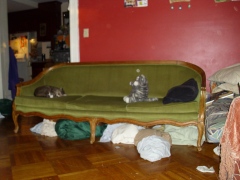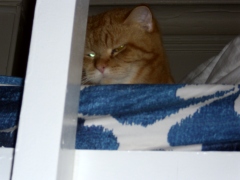Cats in children’s lit – cute fluffballs or evil monsters that will basically ruin the world?
by darraghmartin
As I was compiling a list of my favourite villains in children’s lit it struck me that cats were often not the cuddliest creatures in children’s books. Despite their popularity when they play pianos or walk on treadmills, cats aren’t as beloved when they appear in children’s books.
Think of Snowbell, the sleek white cat who attempts to gobble up poor adorable Stuart Little and his birdy best friend. Or the sly cat in Watership Down that attacks Hazel the hero. The charming but fairly sinister when it comes down to it Cheshire Cat. Mrs. Norris in Harry Potter, prowling the corridors in search of student delinquency. Jupiter from The Deptford Mice, pretending to be a god to all the cute rodents. The evil cat in The Last Battle betraying Aslan, his feline brother and daring to think for himself. Shere Khan from The Jungle Book, the most terrifying of tigers.
Sure, there are some good cats (gentle Harry Cat in The Cricket in Times Square) and some cat anti-heroes who are kind of cool (The Cat in the Hat; Slinky Malinki) and there is also Crookshanks from Harry Potter (lovable furball to some, conniving Kneazle to others).
But it does strike me (from my highly scientific list) that cats are strangely villainous in children’s literature, either too close to adults (like Mrs. Norris) or too wickedly independent. Usually, being independent is good in children’s lit (can’t have too many adventures if you stay at home with the parents) but often there’s a limit imposed on this freedom, conditions of loyalty expected in return. Cats might mark out this boundary, creatures that unlike loving and loyal dogs are too independent, too selfish, too intent on eating cute birds and mice.
What’s with the anti-cat campaign? Have I got it all wrong? Cats, pick up your paws and change your image: YouTube loves you, maybe children’s literature can too…

